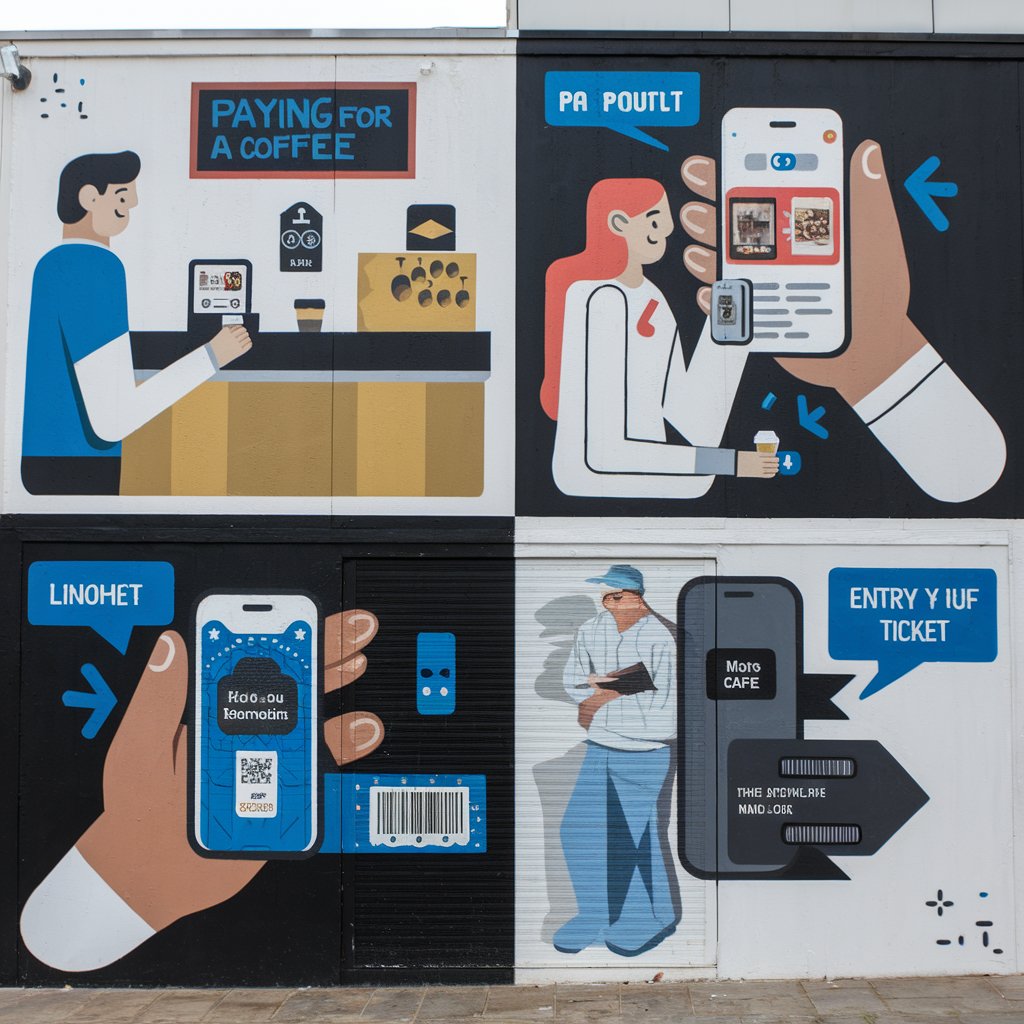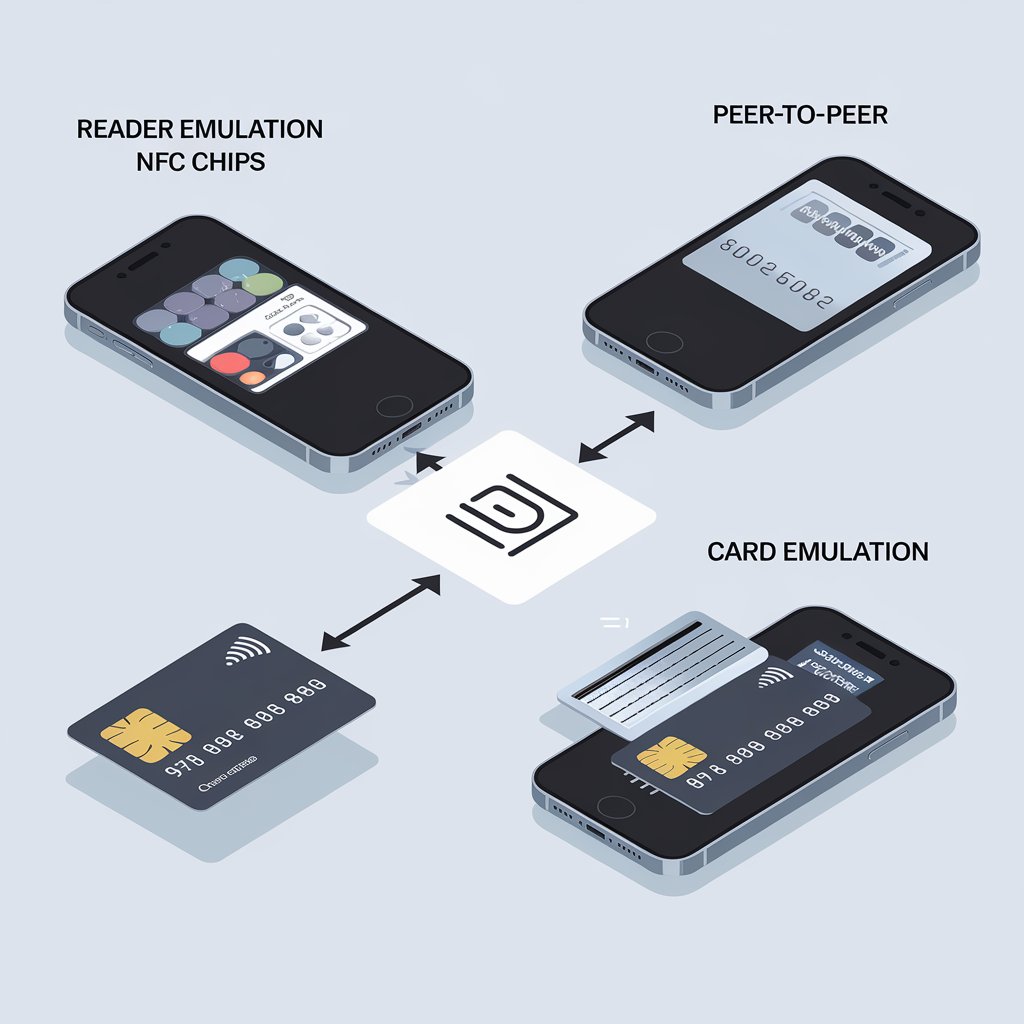The United States Near Field Communication (NFC) market is on the cusp of significant growth, fueled by the increasing demand for contactless payment solutions and the rapid expansion of Internet of Things (IoT) devices. NFC, a short-range wireless communication technology that enables devices to exchange data by bringing them into close proximity, has become a cornerstone of the modern digital ecosystem. With growing demand for seamless, secure, and efficient interactions across various industries, the U.S. NFC market is poised to experience explosive growth in the coming years.
NFC technology is transforming the way consumers and businesses interact with everyday objects, from payment terminals to smart devices. In particular, its integration into mobile payments, smart wearables, retail experiences, and automated systems has revolutionized convenience and security. With contactless payments driving a major portion of the growth, alongside the expanding use of NFC-enabled IoT devices, the U.S. NFC market is set to experience significant expansion.

What is Near Field Communication (NFC)?
Near Field Communication (NFC) is a short-range wireless communication technology that operates within a range of about 4 cm (1.5 inches). It enables devices, such as smartphones, smartwatches, and other IoT devices, to exchange data instantly by bringing them into close proximity. NFC operates on established standards, ensuring its easy integration into various applications.
What differentiates NFC from other wireless technologies like Bluetooth or Wi-Fi is its simplicity and speed. It doesn’t require complex pairing processes or configurations and is optimized for low power consumption, making it ideal for mobile devices and battery-powered gadgets.
The Role of NFC in Contactless Payments
The rise of contactless payments has been one of the primary drivers behind NFC adoption in the United States. As the world increasingly shifted towards hygienic, touch-free solutions, NFC emerged as the go-to technology for secure and swift transactions. Consumers and businesses alike embraced NFC-enabled smartphones, smartwatches, and credit cards for faster, contactless transactions.
NFC-based mobile wallets and payment solutions have gained widespread popularity, enabling users to make purchases simply by tapping their devices. As more consumers adopt NFC-based payment methods, the trend toward cashless transactions continues to accelerate, further expanding the demand for NFC solutions in the payment sector.
This growth is expected to continue as consumers demand faster, safer, and more convenient ways to pay. Retailers, transportation authorities, and other service providers are increasingly adopting NFC technology, integrating it into their systems to provide quick, secure, and seamless payment experiences.
Download PDF Brochure @ https://www.marketsandmarkets.com/pdfdownloadNew.asp?id=520
NFC’s Expanding Role in the IoT Ecosystem
Beyond contactless payments, NFC is playing an important role in the expanding Internet of Things (IoT) landscape in the United States. With the rapid rise of smart homes, wearable devices, healthcare technologies, and connected vehicles, NFC is becoming integral in enabling seamless communication between smart devices.
For example, NFC-enabled smart locks allow homeowners to unlock doors with just a tap of their smartphone or smartwatch. In the healthcare sector, NFC is increasingly used for patient monitoring devices, enabling quick and secure transfer of health data. Additionally, NFC is becoming central to smart retail, where consumers can scan NFC tags to access detailed product information and enhance their in-store shopping experience.
The integration of NFC with other communication technologies, such as Bluetooth and Wi-Fi, enables cross-platform communication, ensuring that IoT devices can effectively share data in real time. In the automotive industry, NFC is also used for keyless entry systems, allowing users to unlock and start their vehicles with their mobile devices.
As more industries adopt IoT solutions, the demand for NFC technology to facilitate seamless interactions between devices is expected to grow substantially. The continued expansion of smart homes, health technologies, and connected transportation systems will further drive the need for NFC solutions.

Why is the U.S. NFC Market Set for Explosive Growth?
Several factors are contributing to the rapid growth of the NFC market in the United States. Let’s explore the key drivers behind this trend:
1. Increased Demand for Contactless Payments
The global shift toward contactless payments has been significantly accelerated by the COVID-19 pandemic, as people sought out safer and more convenient payment methods. NFC emerged as the ideal solution to this need, providing secure, touch-free transactions. As consumers increasingly adopt NFC-enabled mobile devices, smartphones, and smartwatches for payments, the market for NFC solutions in the financial sector is expected to grow substantially.
2. Technological Advancements in Mobile Devices
The continuous advancement of mobile technology has played a key role in NFC’s rapid adoption. With NFC integration becoming standard in most smartphones, wearables, and other mobile devices, the technology is becoming more accessible to consumers. This growing ubiquity of NFC in consumer electronics is driving its adoption in various sectors, from retail to transportation.
3. Enhanced Security and Convenience
NFC offers robust security features, which makes it an ideal solution for applications involving sensitive data, such as payment transactions and access control. With features like encryption and tokenization, NFC ensures that data remains secure, encouraging its widespread use in sectors such as finance and healthcare.
Moreover, NFC provides convenience, allowing users to interact with devices quickly and effortlessly. The simplicity of a one-tap interaction makes NFC an attractive option for industries that require speed and efficiency, including retail and public transport.
4. Government and Corporate Support
Government initiatives to promote cashless transactions and the development of digital infrastructure have created a conducive environment for the growth of NFC technology. Corporate investments in NFC-enabled solutions further drive its adoption across industries. Businesses are eager to enhance consumer engagement, improve operational efficiency, and remain competitive in an increasingly digital economy.
5. The Growth of the Smart Device Ecosystem
As the ecosystem of smart devices continues to grow, the need for NFC solutions is expanding. From smart homes to wearable health devices, the proliferation of connected technologies is driving demand for NFC-enabled solutions that enable seamless, secure communication between devices. NFC’s role in providing easy interactions across this rapidly expanding ecosystem is making it essential to the future of the IoT and connected industries.
The Road Ahead
The United States NFC market is on track for significant growth, supported by the increasing demand for contactless payments and the ongoing adoption of IoT devices. With advancements in mobile technology, enhanced security features, and the growing need for efficient and user-friendly solutions, NFC is becoming a cornerstone of digital transformation across a wide range of industries.
As the market continues to evolve, businesses and consumers alike will benefit from the convenience, security, and efficiency that NFC technology provides. The future of NFC in the U.S. looks bright, with potential growth across multiple sectors including retail, healthcare, transportation, and consumer electronics.
With the shift toward digital solutions and contactless technologies, NFC is poised to play a central role in the future of communication. The U.S. NFC market is primed for explosive growth as industries continue to embrace NFC’s ability to provide secure, seamless, and efficient interactions. From mobile payments to smart devices, NFC is set to redefine the way consumers and businesses connect in an increasingly digital world.
FAQ: United States NFC Market
1. What is Near Field Communication (NFC)?
Near Field Communication (NFC) is a short-range wireless communication technology that enables devices to exchange data when placed within close proximity (typically around 4 cm or 1.5 inches). It is widely used in applications like contactless payments, smart devices, and IoT solutions for secure and efficient communication between devices.
2. How does NFC work?
NFC works by establishing a radio communication link between two devices when they are brought close together. One device, usually called the “initiator,” generates a magnetic field that the “target” device can respond to. This enables data exchange without the need for physical connections or pairing, making it a fast and convenient technology for many applications.
3. What are the key applications of NFC in the U.S. market?
NFC technology is used across a wide range of sectors in the U.S., including:
-
Contactless payments: Enabling fast, secure transactions via mobile wallets or contactless cards.
-
IoT devices: NFC enables seamless communication between devices in smart homes, wearables, healthcare systems, and automotive technologies.
-
Access control: Used in smart locks and security systems to provide keyless entry to buildings or vehicles.
-
Retail and marketing: Enhances customer experiences with NFC-enabled tags, interactive advertisements, and loyalty programs.
4. Why is the NFC market growing in the United States?
The NFC market in the U.S. is experiencing rapid growth due to several factors:
-
Rising demand for contactless payments as consumers prefer fast and secure transactions.
-
Increasing adoption of IoT devices, which rely on NFC for easy, seamless communication between devices.
-
Technological advancements in mobile phones, wearables, and other smart devices that come pre-integrated with NFC.
-
Enhanced security features that make NFC ideal for industries like finance and healthcare.
-
Government and corporate initiatives that support digital payment systems and IoT infrastructure.
5. What are the benefits of NFC technology?
NFC offers several key benefits:
-
Convenience: Allows for fast, one-tap communication between devices, whether for payments, data transfer, or device setup.
-
Security: NFC transactions often use encryption and tokenization to protect data, making it a secure method for payments and access control.
-
Low power consumption: NFC requires minimal energy, which is especially beneficial for mobile devices and wearables.
-
Wide applications: From retail and healthcare to smart homes and transportation, NFC is versatile across many industries.
